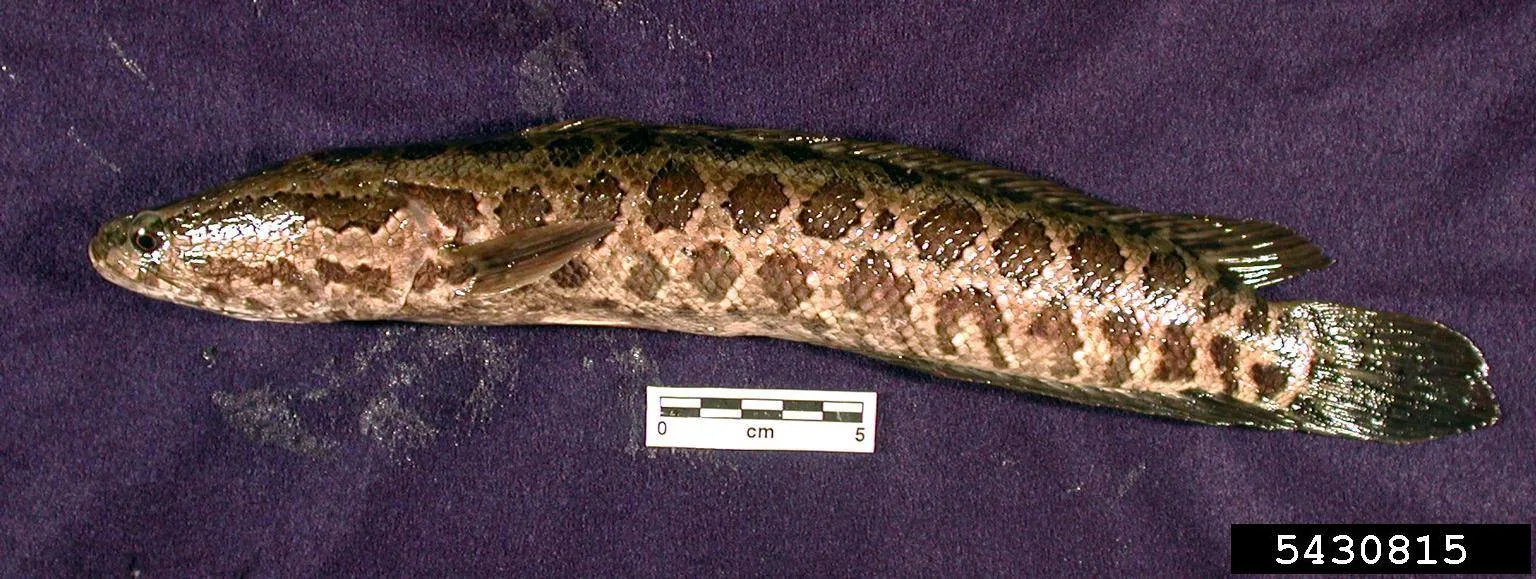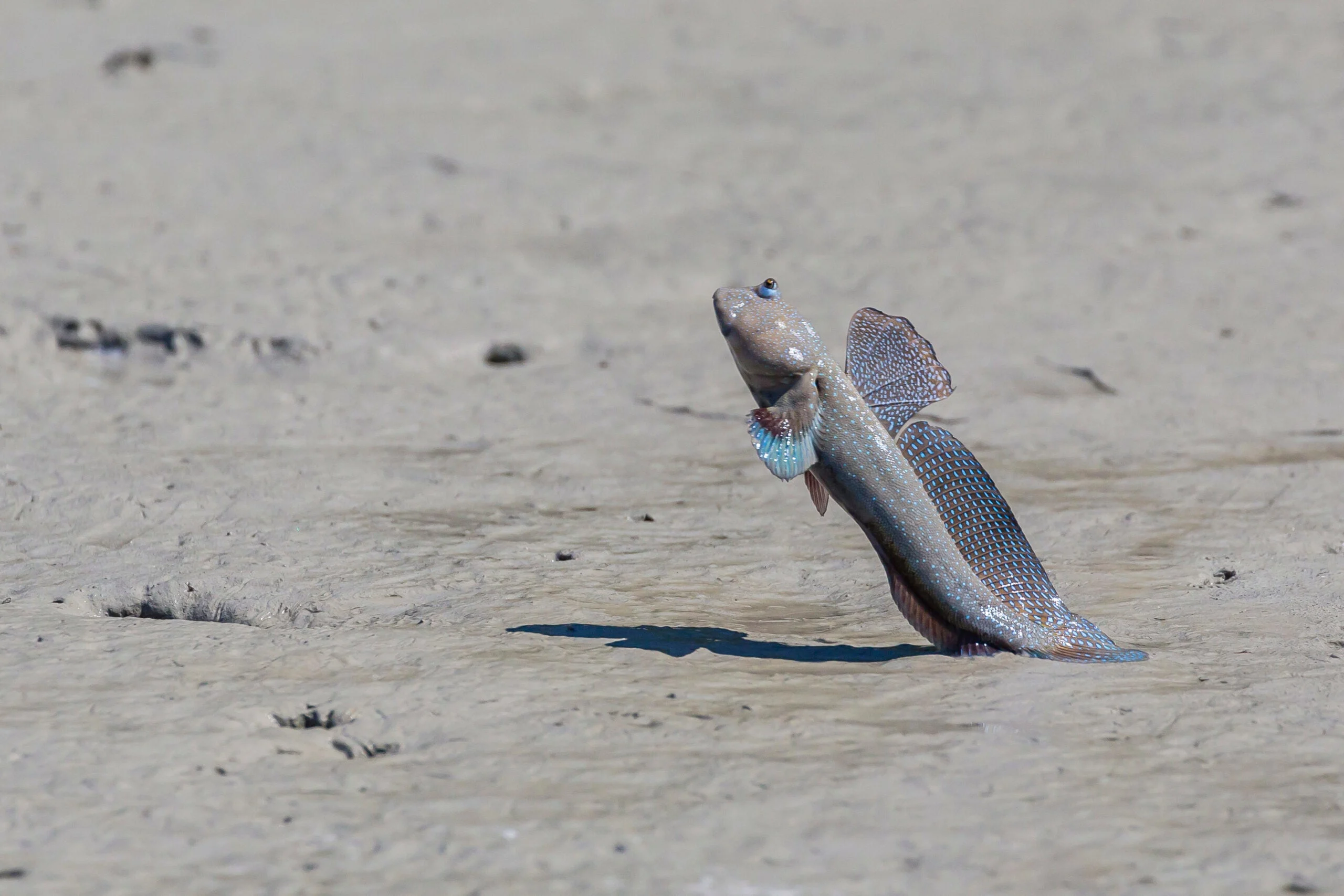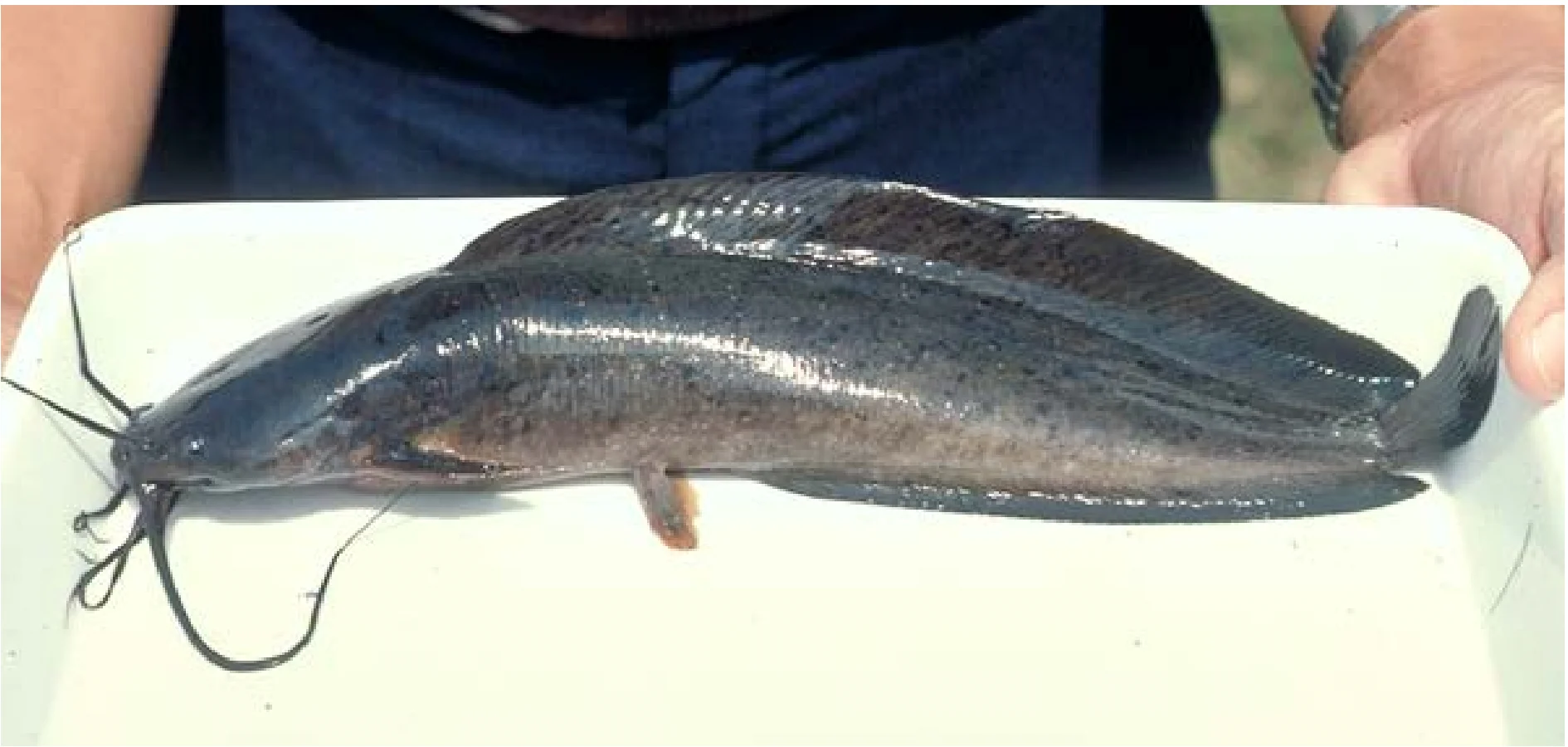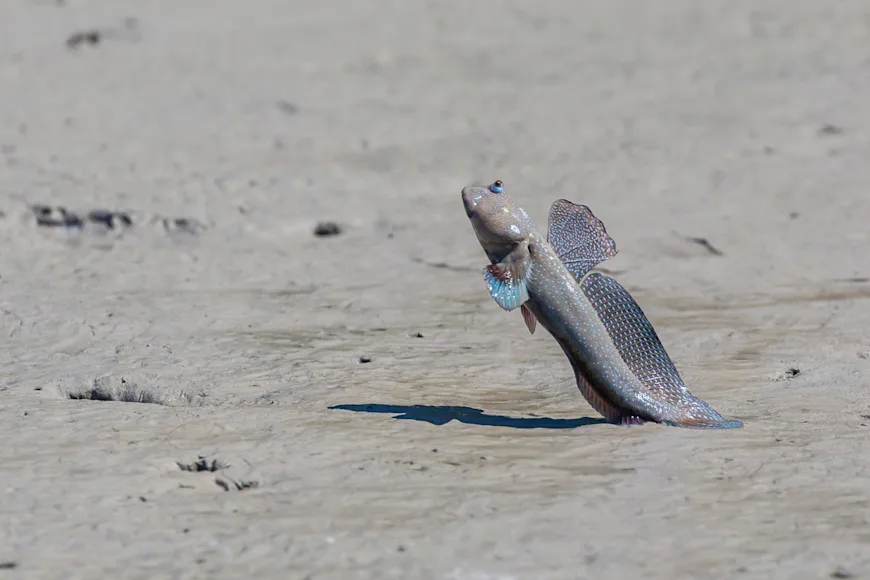As life on earth evolved, billions of creatures made the move from primordial ooze to life on land. For most, that eons-long transformation was a one-way trip. With the exception of amphibians—which spend their larval stage in water and later metamorphize into air-breathers—the majority of organisms that start life with fins and gills stay underwater for the duration, denizens of one world, not two. The blue whale that beaches or the exuberant goldfish that leaps from its bowl find the same fate: curtains. But there are some fish that walk on land.
For a select handful of fish, the transition from water to land can be a round trip instead of a dead end. At least 11 genera of fish are capable of “terrestrial locomotion”—the ability to travel on land—and they move from water to land and back again with ease. Scientists find these piscine outliers fascinating studies in evolution. The rest of us can marvel at the toughness, adaptability, and flamboyant peculiarity of creatures that thrive on both sides of the tideline. Here are six of the freakiest fish-out-water you’ll ever encounter.
Fish That Walk on Land
Northern snakehead
Mudskippers
Pacific leaping blenny
Climbing perch
Walking catfish
Mangrove rivulus
Northern snakehead, Channa argus

The Northern Snakehead. USGS
This invasive Asian species discovered in Maryland in 2002 is thought to have been released from D.C.-area fish markets. It has since become established throughout the Potomac River system and has been found as far afield as Massachusetts and California. Capable of breathing air while on land, snakeheads can survive out of water for days. Unlike most fish that walk on land, which are typically small, snakeheads get quite large: The IGFA world record, caught in Potomac Creek, Virginia, weighed 19 pounds, 5 ounces.
Early reports of America’s snakehead problem painted dire scenarios of an army of vicious predators slithering madly from pond to pond as they invaded the entire country. The reality proved less dramatic. Researchers who’ve studied snakehead locomotion say the aggressive water predator becomes quite timid and lethargic on land. Snakeheads rely on a kind of “soldier crawl” (moving their back fin and head in opposite directions, like a bellycrawling infantryman) that makes for slow going. A study that looked at what exactly causes snakeheads to go on a walkabout found that of the 15 environmental conditions tested, only three (extremely high salinity, low Ph, or high Co2 concentrations) caused them to set out on land—and those extreme conditions are more common in their native range than in the U.S.
Mudskippers, Oxudercinae

A Mudskipper.
A Mudskipper. Michael Nolan via Getty Images
These burrowing fish that live in intertidal zones not only feel right at home on land, but they can actually die if they spend too much time underwater. Mudskippers get their name from their ability to jump or skip from one tide pool to the next, and they propel themselves with the help of an unusual jointed pectoral fin that looks and functions much like a leg. Probably the most commonly encountered amphibious fish, mudskippers make up more than 20 species found in tropical, subtropical, and temperate regions around the globe.
Ranging up to a foot long, they have eyes that protrude from the top of their heads, allowing them to see above and below the water simultaneously. They breathe on land by using water trapped inside their large gills and by absorbing oxygen through their skin and from the lining of their mouth and throat. Mudskippers are thought to spend as much as three-quarters of their lives out of the water.
Pacific leaping blenny, Alticus arnoldorum
No, the leaping blennies isn’t a farcical medical condition dreamed up by Monty Python—t’s a fish species dreamed up by Mother Nature. Topping out at 3 inches, with a prominent head crest and an orange-red dorsal fin, the leaping rockskipper (as it’s also known) can walk on land and jump many times its own body length by curling its tail back on itself and releasing it like a spring. Several blenny species are amphibious and can live out of the water for hours at a time.
The Pacific leaping blenny, however, has made the move permanently, preferring to stay in the splash zone around the island of Guam, where limestone rocks scoured by pounding surf provide plenty of crevices and holes for the fish to hide. Scientists believe this adaptation to land is a largely successful bid to avoid marine predators; research has found that the rockskipper uses camouflage to avoid terrestrial predators such as birds, lizards, and crabs as well.
Climbing perch, Anabas testudineus
Highly prized as a food fish throughout Asia, where they often inhabit the same brackish, poorly oxygenated waters as snakeheads, the climbing perch is a fish that can walk on land for several hundred meters. The fish’s name derives from its rumored ability to climb trees—a legend for sure. It can remain out of water for six to 10 hours by using a maze-like breathing organ called a labyrinth to extract oxygen from the air, and it has been known to survive even longer by burying itself in mud to stay moist. In Australia, where climbing perch are thought to have been introduced by fishing boats, the fish are considered an invasive species. Surprisingly, that classification is due to their status as prey, not predator. The 10-inch perch’s ability to flex their spiny fins when swallowed has led to the choking deaths of native Australian birds.
Walking catfish, Clarias batrachus

The Walking Catfish Maryland Department of Natural Resources
Another nonnative invasive species that’s taken up residence in Florida, walking catfish are a Southeast Asian fish first reported in Broward County in 1967. They’ve spread throughout south and central Florida and are now commonly found in canals, ponds, and Walmart parking lots. They can cover ¾ of a mile on land and survive 18 hours out of water, and their ability to colonize new territory is greatly aided by their ability to walk on land and use storm drains to move around during periods of high stormwater runoff. Initially thought to pose a dire threat to native species, walking catfish—which can grow to 20 inches and three pounds—have proven to be more of a nuisance than a serious threat, according to the Florida Fish and Wildlife Conservation Commission. It’s still against state law to transport live walking catfish, so anglers who want to eat them are advised to immediately put them on ice. The species’ extreme sensitivity to cold weather may be the single biggest factor limiting their spread.
Read Next: The 10 Wildest Hunting and Fishing Techniques From Around the World
Mangrove rivulus, Kryptolebias marmoratus
Big wonders sometimes come in the tiniest packages. Measuring only ½ to 1 ½ inches long on average, the mangrove rivulus is the only vertebrate known to be capable of self-fertilization and is thought to have the widest distribution of any inshore fish species in all of North, Central, and South America. It’s also been documented spending an astounding 66 days out of water, typically inside fallen logs where it settles into burrows left behind by insects. (One study found hundreds of the normally quite territorial fish concentrated in a single log far removed from any water body.)
Mangrove rivulus moves to land when water conditions degrade or to pursue insects. The fish are able to breathe through their skin and gills, and they get around on land, according to another study, by using a “diverse suite of behaviors … categorized as launches, squiggles, and pounces.”


